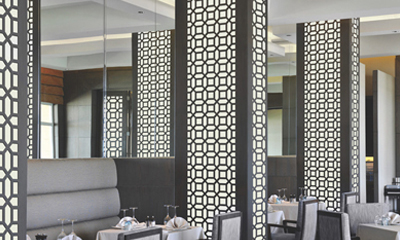Different Types of Wire Mesh A Comprehensive Guide
Wire mesh is an indispensable material used in numerous industries and applications, thanks to its versatility, strength, and durability. Made from metal wire strands woven together, it comes in various types, each serving specific functions. This article will explore the different types of wire mesh, their characteristics, and their common uses.
1. Welded Wire Mesh
Welded wire mesh is created by welding together wire intersections at right angles, forming a grid-like pattern. This type is known for its rigidity and strength. It is often used in construction for reinforcing concrete, in agricultural fences, and for industrial applications. Welded wire mesh is available in various wire diameters and mesh sizes, making it adaptable to the needs of different projects.
Applications - Reinforcement in concrete slabs - Animal enclosures and sheds - Security fences
2. Chain Link Mesh
Chain link mesh is made of interlocking steel wires that form a diamond pattern. This type of wire mesh is popular for fencing due to its strength and visibility. It is cost-effective and easy to install, making it a preferred choice for both residential and commercial properties. Galvanization or vinyl coating further enhances its corrosion resistance, extending its lifespan in outdoor environments.
Applications - Residential and commercial fencing - Safety barriers in parks and playgrounds - Sports facilities
3. Expanded Metal Mesh
Expanded metal mesh is produced by cutting and stretching a metal sheet to create a mesh form. Unlike welded or woven wire mesh, this type maintains its strength while being much lighter. The hexagonal openings make it aesthetically pleasing and functional, offering services such as ventilation while providing security.
Applications - Security screens in windows and doors - Grills and protective barriers - Decorative facades
Woven wire mesh is made by weaving strands of wire together, resulting in a flexible and versatile product. It can be manufactured in various patterns such as plain weave, twill weave, and Dutch weave. Each pattern has its specific applications, ranging from filtration in food processing to heavy-duty uses in mining.
different types of wire mesh

Applications - Filtration systems in water treatment - Manufacturing of sieves and filters - Industrial and architectural applications
5. Stainless Steel Mesh
Stainless steel mesh is made from high-quality steel alloys that resist corrosion, rust, and staining. This type of wire mesh is particularly suitable for areas exposed to harsh environments. Often used in food processing, pharmaceutical, and chemical industries, stainless steel mesh complies with strict hygiene and safety standards.
Applications - Food and beverage processing - Chemical plants - Architectural elements where aesthetics matter
6. Fiberglass Mesh
Fiberglass mesh, unlike its metallic counterparts, is made from woven fiberglass strands and is primarily used in construction and repair applications. Lightweight yet strong, this type is resistant to chemical corrosion and is ideal for use in moist or high-alkali environments. It is commonly employed as a base for stucco, wall coverings, and as reinforcement.
Applications - Exterior insulation and finish systems (EIFS) - Supporting structures in masonry - Repairing cracked walls
7. Copper Mesh
Copper mesh is valued for its antimicrobial properties and is often utilized in applications requiring hygiene, such as food preparation areas. This mesh is also used in electrical grounding and pest control products. The natural beauty of copper can add an aesthetic element to decorative projects.
Applications - Pest control and rodent exclusion - Artistic projects and crafts - Electrical grounding applications
Conclusion
Wire mesh comes in a myriad of types, each tailored for specific needs and industries. Whether used for security fencing, construction reinforcement, or intricate decorative applications, its ability to provide strength and versatility makes it a vital resource. Understanding the different types of wire mesh and their applications not only helps in selecting the right type for any project but also demonstrates the material's indispensable role in modern construction and manufacturing processes. Whether you’re an engineer, architect, or DIY enthusiast, familiarizing yourself with these options will enable you to make informed decisions for your next project.
-
Turn Down the Noise: The Future of Highway Sound Barriers
NewsApr.09,2025
-
Silence the Sound: The Power of Highway Noise Barriers
NewsApr.09,2025
-
Reduce Road Noise Effectively with Highway Noise Barriers
NewsApr.09,2025
-
Noise-Free Living: How Highway Barriers Make a Difference
NewsApr.09,2025
-
Engineered for Silence: Highway Noise Barriers for Every Road
NewsApr.09,2025
-
Effective Noise Control: Highway Barriers for a Quieter Tomorrow
NewsApr.09,2025
Subscribe now!
Stay up to date with the latest on Fry Steeland industry news.

